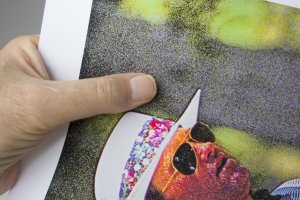photog-art-printer
Fan of Printing
- Joined
- Aug 6, 2022
- Messages
- 102
- Reaction score
- 33
- Points
- 65
- Printer Model
- HP
Paper Quality: Cheap vs. Expensive for Photo Printing
The choice between cheap and expensive printer paper.
Currently armed with a Canon Pro 1000 loaded with pigment ink, (with special thanks to "Mr. Hat" for the troubleshooting), I'm still in the testing phase.
Because I prefer paying 35 euro for a roll of paper, rather than 200, I wonder about the differences.
Is it possible to achieve satisfactory results with a €35 roll of paper, or must I invest significantly more for premium quality?
For example, three brands of paper appear to be bargain priced. What are the disadvantages?
LabelHeaven (230 grams), EtikettenWorld (230 grams) and Mediarange (apparently "cast coated" for a glossy finish).
My considerations:
Longevity: Will cheaper paper options stand the test of time compared to premium brands like Hahnemühle?
Fading: Can I expect differing rates of fading between budget and luxury papers?
Colour Reproduction: Discussions have arisen regarding the density of blacks and colour accuracy. Can adjusting profiles mitigate these differences, or are they noticeable?
The choice between cheap and expensive printer paper.
Currently armed with a Canon Pro 1000 loaded with pigment ink, (with special thanks to "Mr. Hat" for the troubleshooting), I'm still in the testing phase.
Because I prefer paying 35 euro for a roll of paper, rather than 200, I wonder about the differences.
Is it possible to achieve satisfactory results with a €35 roll of paper, or must I invest significantly more for premium quality?
For example, three brands of paper appear to be bargain priced. What are the disadvantages?
LabelHeaven (230 grams), EtikettenWorld (230 grams) and Mediarange (apparently "cast coated" for a glossy finish).
My considerations:
Longevity: Will cheaper paper options stand the test of time compared to premium brands like Hahnemühle?
Fading: Can I expect differing rates of fading between budget and luxury papers?
Colour Reproduction: Discussions have arisen regarding the density of blacks and colour accuracy. Can adjusting profiles mitigate these differences, or are they noticeable?
Last edited:

